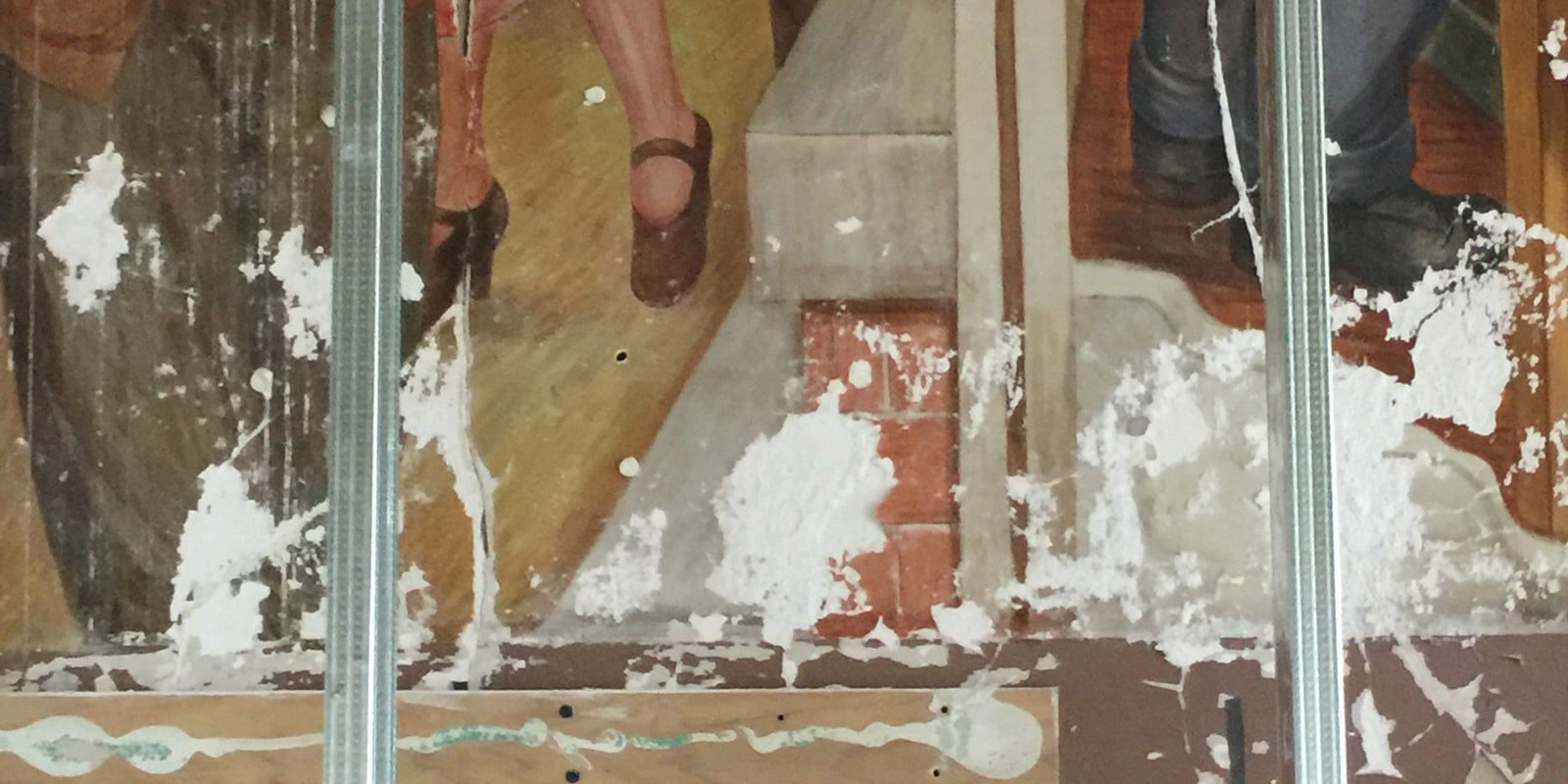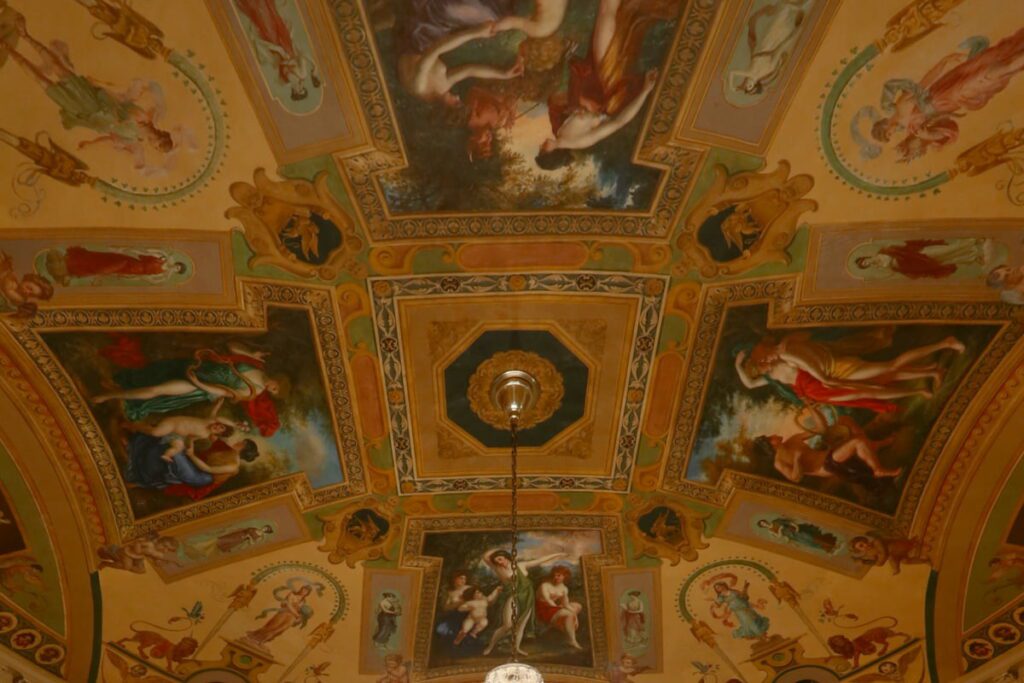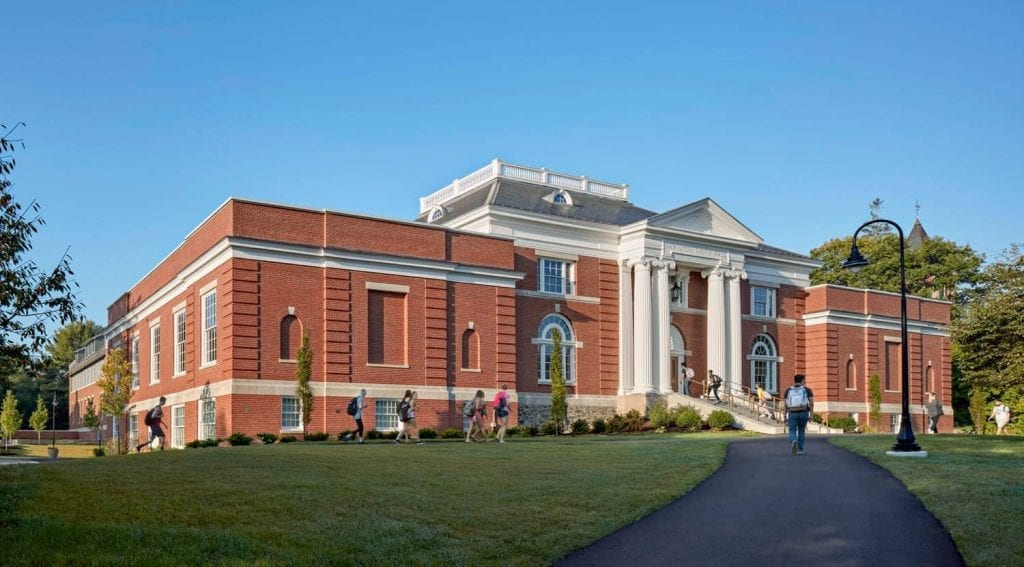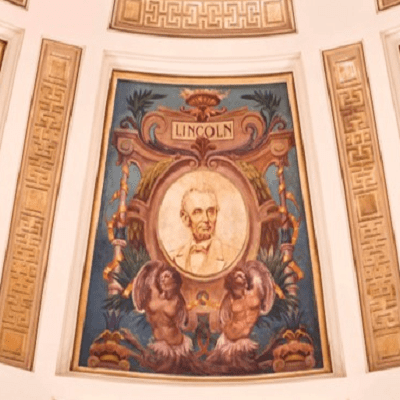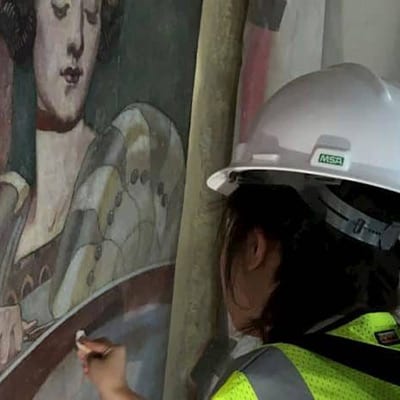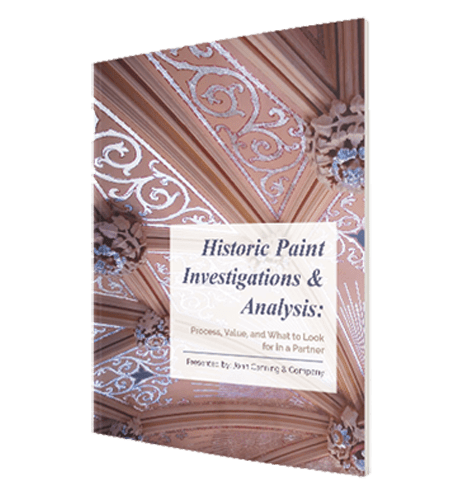During the historic art restoration process, our conservators encounter many different types of damage. These damages can range in severity and all require unique methods for conservation and restoration. Although art damage can manifest in many ways, the six major types we see most often are craquelure, flaking, water damage, abrasion, UV damage, and physical damage.
1 ) Craquelure
Craquelure manifests in artwork as a network of visible surface cracks and lines in the coatings, including paint, varnish, or lacquer. Cracking in a paint layer or surface coating can be caused by age, exposure to changing elements and temperatures, or physical stress on the painting, such as a fall or blow to the surface. To restore a painting suffering from craquelure, a conservator may recommend consolidation of the paint layer, inpainting, and the application of a proactive varnish to ensure no further damage or cracking occurs to the coatings.
2) Flaking
Paint flaking is a common sign of wear and age that occurs on historic artworks. The visual signs of flaking are obvious to the naked eye and can result in the loss of sections of the paint layers throughout the artwork. Exposure to water, changes in temperature and storage, and general aging can all be causes of flaking paint. When flaking is encountered during artwork conservation, it is often recommended that the failing paint layers be carefully reattached to the substrate and sealed with a finish coat of varnish to keep the paint from further failure. Any sections of the artwork that may have been lost to flaking can be inpainted or reproduced by the conservator if that is the chosen restoration path.
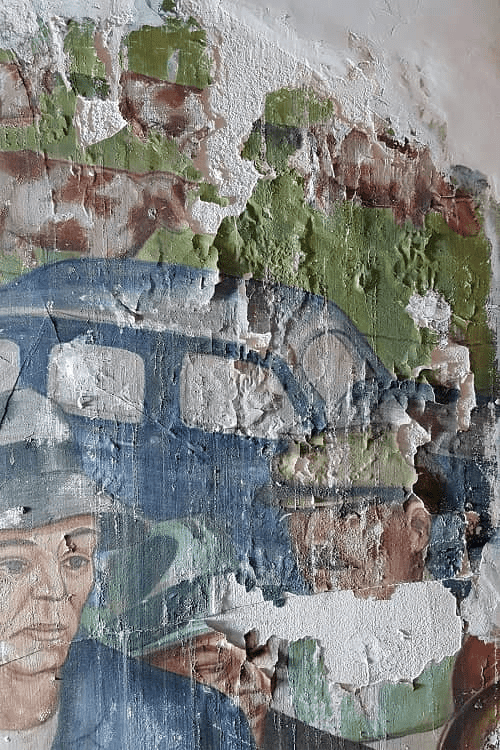
Paint flaking and loss on the Overmyer mural at the University of New Hampshire
3) Water Damage
Water damage can present itself through other forms of failure, such as flaking or paint loss. It can also result in staining to the paint surface and moisture within the paint layers, causing the paint layers to become damp or detached from the base substrate. This type of damage is found most commonly on murals painted directly onto a substrate such as plaster. Moisture intrusion from the walls can cause water damage to the artwork and necessitate the conservation of the piece. In the case of water damage, a conservator may recommend removing the artwork and addressing the base problem before returning the painting to its original location. Unless the root cause for moisture intrusion is solved and the substrate is consolidated, the water will continue to damage the artwork and further the degradation of the art piece.
4) Abrasion
Abrasion occurs when there is a progressive loss of surface coatings due to physical scraping, wear, or rubbing of the painting’s surface. This can occur during storage, transport, or as a result of exposure to people or objects touching the artwork’s surface. The abrasion seen here on the mural at the Old Steinway Building in New York City is a perfect example of the scraped pattern and rough texture caused by abrasion. Surface cleaning, inpainting, and the application of a protective coating are all steps likely to be recommended by the conservator to repair the areas affected by abrasion.
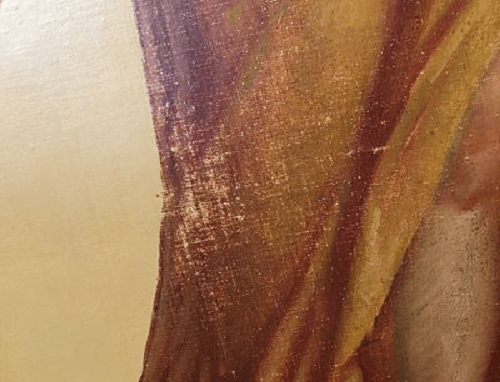
Artwork abrasion at the Old Steinway Building in New York City
5) UV Damage
UV damage is a very common form of art damage, as many art pieces are exposed to UV light while they are on display. Unless a piece is stored away, it is nearly impossible to stop a painting from being affected by UV light. Constant exposure to light can cause the top layers of varnish to age and yellow, creating a dark film over the painting that obscures the original vibrancy of the art. When UV damage is present on an art piece, it is necessary to clean the artwork and remove the varnish layer to reveal the underlying paint and restore the art to its original appearance. The painting should then be re-varnished to seal the paint layers and maintain its appearance.
6) Physical Damage
Physical damage to a historic artwork can include rips, tears, and punctures caused by environmental factors, improper handling and restoration, or any other reason such as vandalism. This type of artwork damage is often the most evident, as it will manifest in torn canvases, ripped or punctured substrate, and other signs of harm that are visible and easily identifiable. When it comes to physical damage, the artwork may be in a vulnerable state that requires immediate attention from a qualified professional to remedy the affected areas. The canvas or other substrate on which the artwork is completed may need a full repair, which can include replacing missing areas of the substrate, inpainting areas of lost work, and re-finishing the surface to ensure the damaged areas are protected from further harm.
All types of art damage will be documented in a conditions assessment performed by a qualified conservation professional. The assessment will determine the necessary steps required to return the artwork to its historic appearance and conserve the historical integrity of the piece. As with all forms of art conservation, every step taken by a conservator is completed using reversible methods and materials that do not harm or alter the historic integrity of the art. The conservator may decide during the assessment that the process of conserving the artwork would prove to be more harmful to its integrity than simply leaving it as is. In this case, the conservator will note this in the treatment recommendations section of their report.
Our team of conservators and restoration professionals specializes in providing well-researched, thorough, and accurate art condition reports for historic murals and artwork. Our experienced team is well-versed in the details and underlying causes of historic art damage and is knowledgeable in the process required to restore them. We would be happy to assist you with any art conditions reports for your historic murals or artwork pieces; simply request a consultation to connect with one of our knowledgeable consultants.

